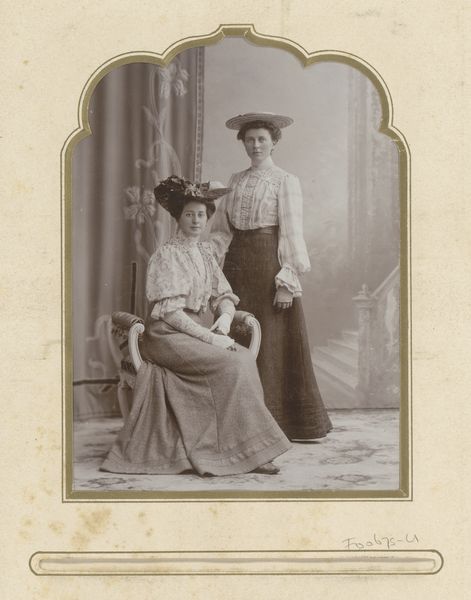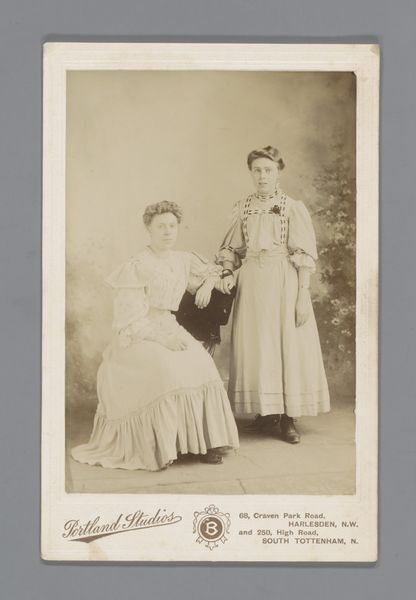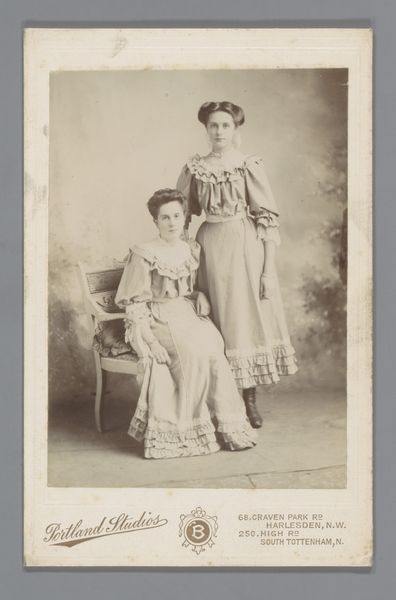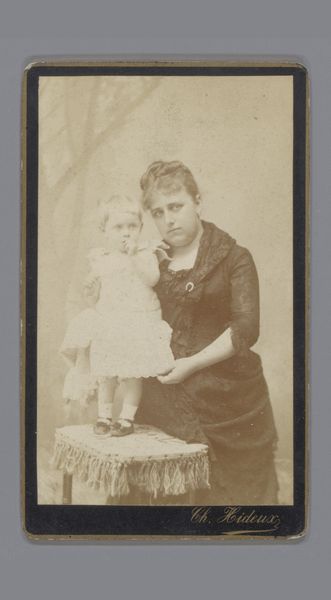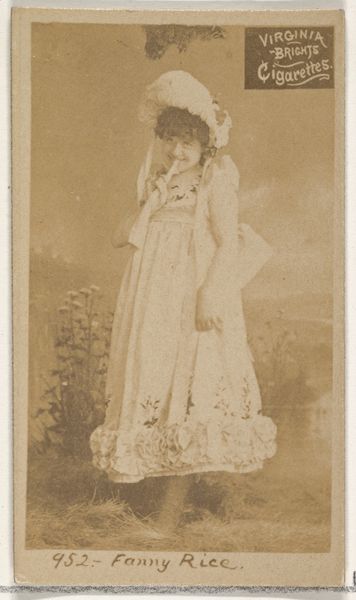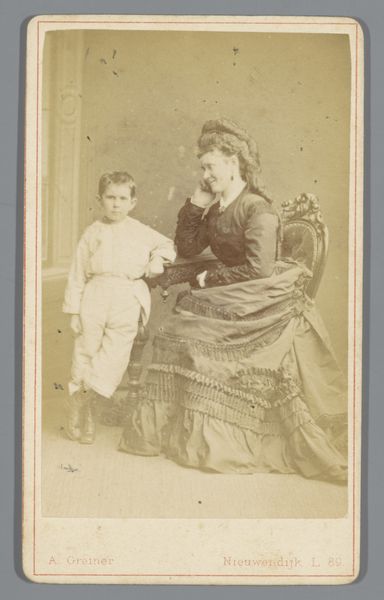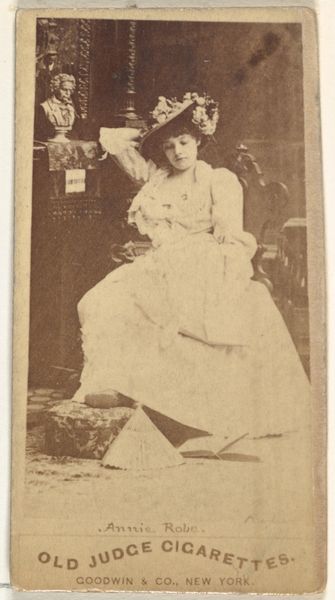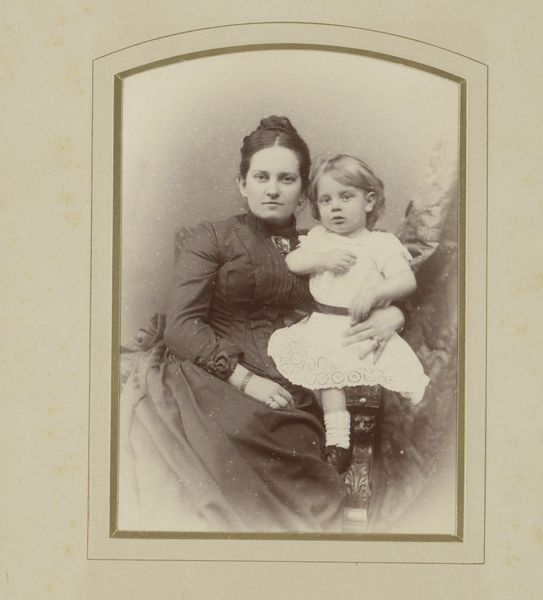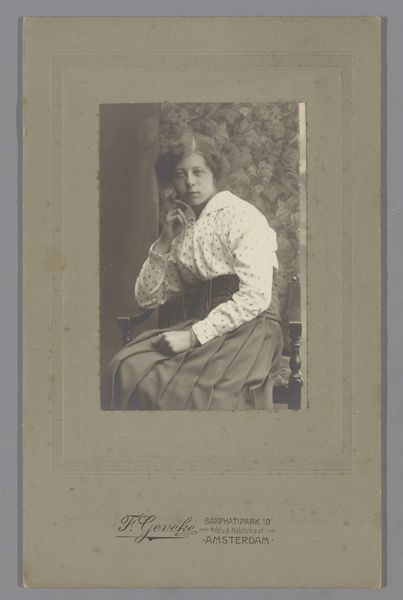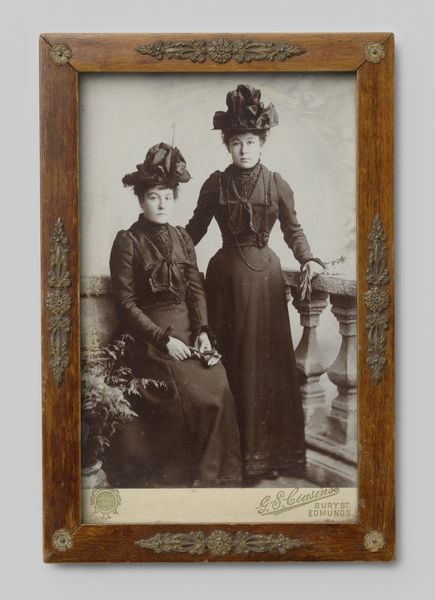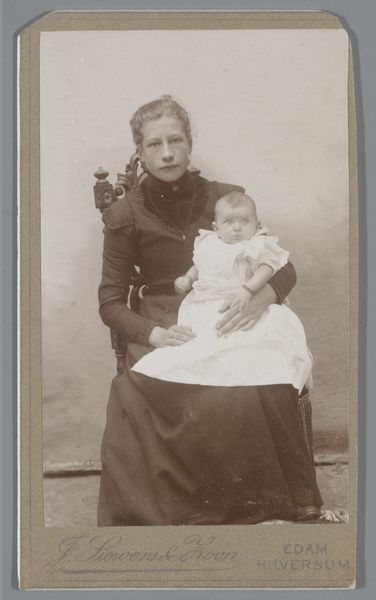
Dimensions: height 104 mm, width 63 mm
Copyright: Rijks Museum: Open Domain
Curator: J. Child's turn-of-the-century photograph, “Portret van een onbekende vrouw met kind op schoot," captures a poignant moment between a mother and child. It's a fine example of Pictorialism, with clear Impressionist leanings. Editor: The soft focus immediately strikes me; it’s like looking through a nostalgic haze. The monochrome palette amplifies that feeling. There’s a delicate interplay between light and shadow, particularly on their garments, rendering an ethereal quality. Curator: It’s interesting to consider this work within the context of early photography. The subject's identity is unknown to us, highlighting the period’s attitude toward portraying bourgeois familial virtue, and also the societal pressure to document that role, regardless of true affect or status. Editor: True, and that formal composition lends itself to an analytical reading. Notice how the stone wall behind them creates a textured backdrop that frames the smooth contours of their faces and dresses? This stark contrast enhances the subjects, elevating them. The juxtaposition of rough stone against refined fabrics and features provides a semiotic playground! Curator: Absolutely. This photograph speaks to a certain performativity, a way of publicly asserting the subject's identity through these calculated poses, dress codes, and backdrops. Consider how studio photography democratized portraiture for the middle class. The popularity of this portrait reveals broader shifts in cultural value. Editor: Indeed. The light feels intentional in a way to highlight the young girl in white. It creates a focal point in an image with complex geometry with lines guiding our gaze in all different directions. I find myself questioning why such a formal rigid pose and style with two very delicate features of mother and child Curator: I'm fascinated by this work’s ability to blend historical context and intimate portraiture to explore class and self-image in this specific historical moment, opening up many questions for consideration today. Editor: I appreciate how it prompts me to question not just what I see, but how it feels to see—and why such formal conventions existed in early photography and how the tension in this image can exist in one work.
Comments
No comments
Be the first to comment and join the conversation on the ultimate creative platform.
